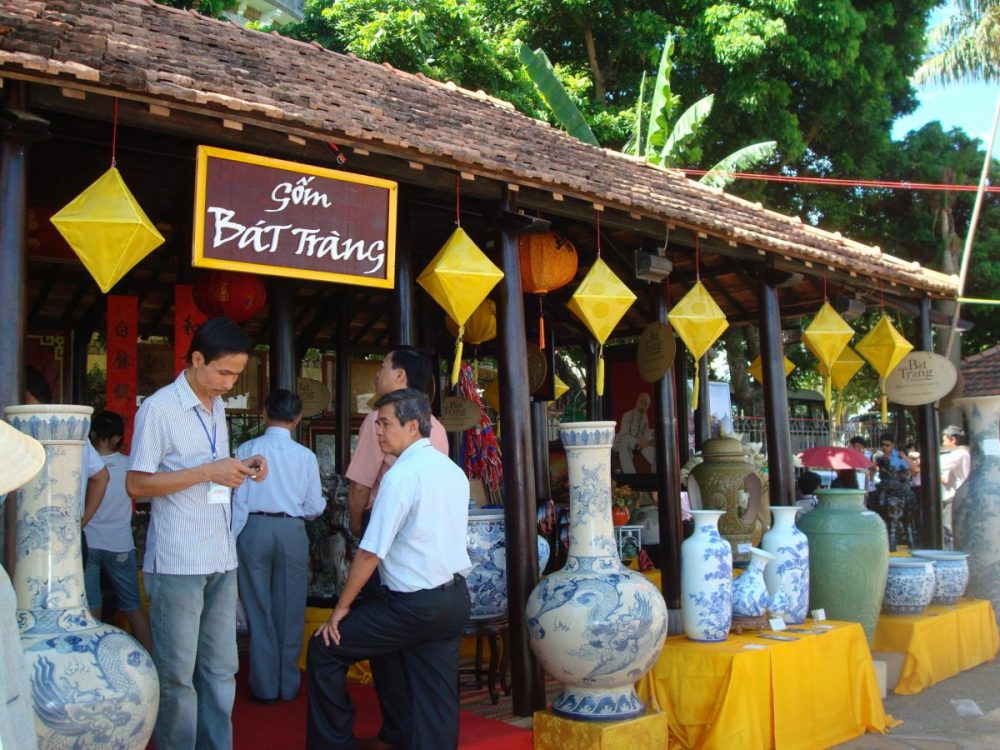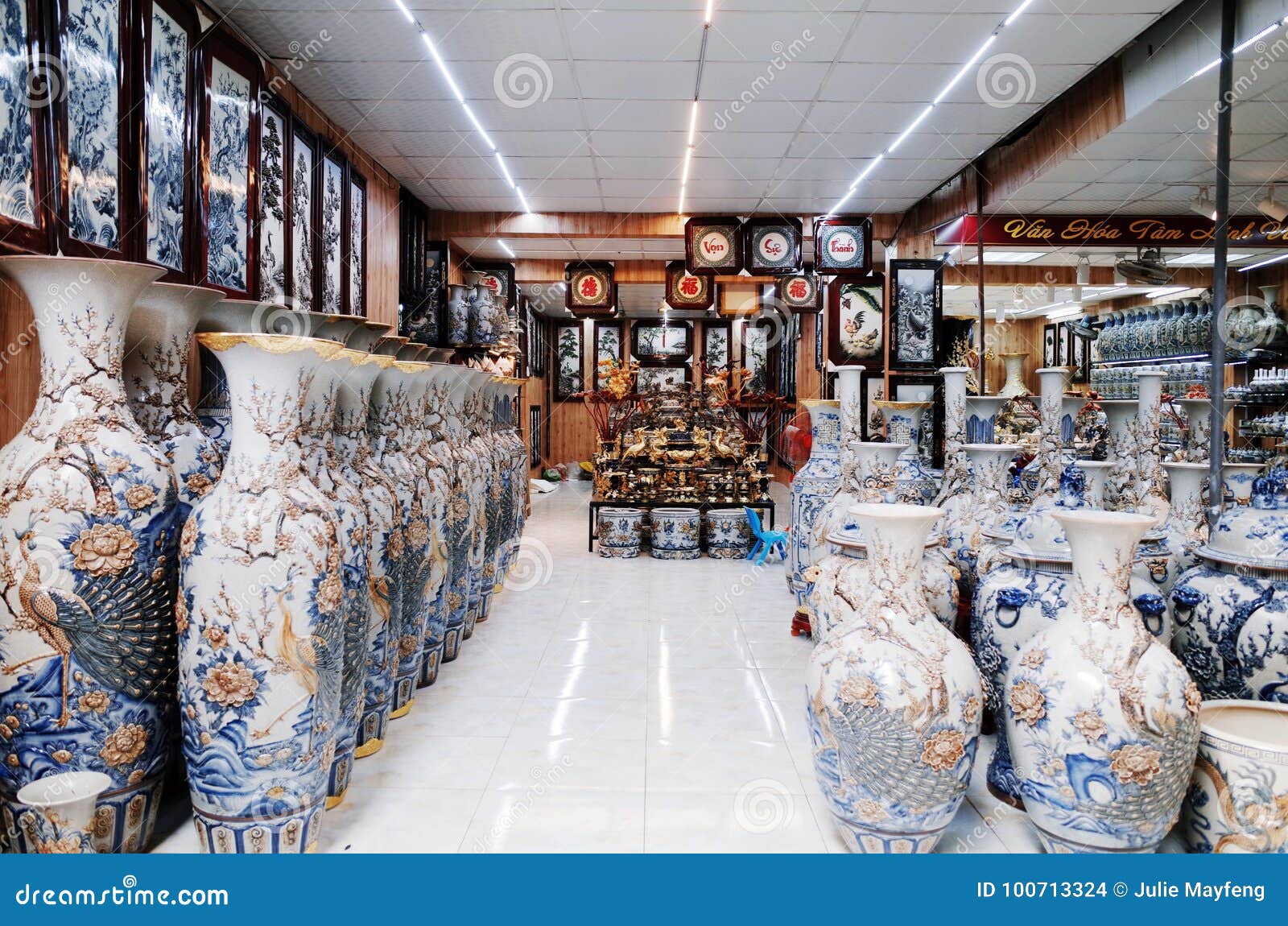News
Bat Trang Ceramics: Unique Handmade Pottery from Vietnam’s Traditional Village
Ceramics have been an integral part of Vietnamese culture for centuries, deeply embedded in the fabric of daily life and spiritual practices. Among the many renowned ceramic traditions, Bat Trang ceramics stand out for their exquisite craftsmanship and cultural significance. Originating from the Bat Trang village near Hanoi, these ceramics not only represent artistic mastery but also play a crucial role in various Vietnamese rituals and ceremonies. This article explores how Bat Trang ceramics are used in traditional rites, revealing the intricate relationship between art, spirituality, and communal identity in Vietnam.
The Historical Significance of Bat Trang Ceramics in Vietnamese Culture

Understanding the historical roots of Bat Trang ceramics provides essential context for appreciating its ceremonial importance. This section delves into the origins, development, and evolution of Bat Trang ceramics, highlighting their journey from utilitarian objects to sacred ritual tools.
Before diving into specifics, it is important to recognize that Bat Trang ceramics are much more than decorative pottery; they serve as conduits of cultural memory and spiritual expression in Vietnamese society.
Origins and Evolution of Bat Trang Ceramics
Bat Trang ceramics trace their history back over 700 years, emerging during the Ly Dynasty period (11th century). The village’s rich clay deposits and favorable conditions fostered a thriving ceramic industry.
Initially, ceramics from Bat Trang were simple, functional pieces designed for everyday use. However, as artisans honed their skills, intricate designs and sophisticated glazing techniques developed, making the pottery aesthetically pleasing and culturally valuable. This progression reflects a broader trend in Vietnamese material culture where utility meets artistry.
The remarkable durability and intricate blue-and-white motifs inspired by Chinese ceramics became trademarks of Bat Trang pottery. Over centuries, these ceramics evolved to incorporate uniquely Vietnamese symbols such as dragons, phoenixes, and lotus flowers—each carrying deep spiritual meanings.
The Role of Bat Trang Ceramics in Preserving Vietnamese Heritage
Bat Trang ceramics serve as tangible links to Vietnam’s past. They encapsulate stories of dynastic changes, religious shifts, and community values. Many ancient artifacts excavated from temples, royal courts, and gravesites were crafted in Bat Trang, indicating their esteemed status.
In preserving intangible heritage, ceramics have helped sustain traditional skills passed down through generations. Families of potters guard proprietary techniques involving clay preparation, firing processes, and decorative patterns, ensuring continuity despite modernization pressures.
Through festivals and exhibitions showcasing Bat Trang ceramics, local communities reinforce their collective identity and educate younger generations about their cultural roots.
Artistic Characteristics That Define Bat Trang Ceramics
One cannot disentangle the spiritual importance of Bat Trang ceramics from their unique aesthetics. The visual elements imbue the pieces with symbolic resonance, enhancing their suitability for rituals.
Key characteristics include:
- Smooth, glossy glaze achieved through high-temperature kilns.
- Classic cobalt blue painted on white porcelain backgrounds.
- Motifs blending mythology, Buddhism, Confucianism, and nature.
- Functional forms such as bowls, plates, jars, incense holders, and ritual vessels.
This artistic language transforms each ceramic piece into more than mere object—it becomes a participant in spiritual communication during ceremonies.
Bat Trang Ceramics in Ancestral Worship Practices

Ancestral worship is a cornerstone of Vietnamese spirituality, expressing respect and remembrance for forebears who continue to influence family wellbeing. Bat Trang ceramics occupy a pivotal role within this tradition.
Before exploring detailed uses, it’s vital to appreciate that ancestral rites are not merely acts of veneration but complex social rituals reinforcing familial bonds.
Ceramics as Offerings and Ritual Implements
In the context of ancestral worship, Bat Trang ceramics often take the form of offering dishes, candle holders, and incense burners placed on the altar. These items hold symbolic weight:
- Bowls contain food or fruits offered to ancestors, representing sustenance and gratitude.
- Incense holders facilitate communication between the living and departed spirits.
- Candle stands symbolize enlightenment and the presence of divine light.
The quality and craftsmanship of ceramics used underscore respect and sincerity towards ancestors. Families frequently invest in finely made Bat Trang pieces, reflecting both aesthetic appreciation and spiritual intention.
Symbolic Decoration on Ceramics for Ancestor Veneration
Decorative motifs on Bat Trang ceramics used in ancestral rituals convey auspicious meanings. Common images include:
- Dragons, symbolizing power and protection.
- Phoenixes, representing renewal and harmony.
- Peonies and lotuses, denoting purity and longevity.
These symbols transform the ceramics from functional vessels into embodiments of blessings and positive energy, thereby enhancing the effectiveness of the rituals.
The Ritual Process and Ceramic Placement on Altars
The physical arrangement of ceramics on ancestor altars follows prescribed conventions. Typically, incense holders occupy the center, flanked by offering bowls and candle stands. Such placement balances aesthetic symmetry with spiritual symbolism.
During significant holidays such as Tet (Lunar New Year) and death anniversaries, families refresh offerings using fresh food presented on Bat Trang plates and bowls. This practice reinforces the cyclical nature of life and continual respect for lineage.
Moreover, the ceramics themselves are often cleansed and cared for meticulously before ceremonies, emphasizing reverence for both ancestors and the objects facilitating communion.
The Role of Bat Trang Ceramics in Religious Ceremonies

Vietnamese religious ceremonies, influenced by Buddhism, Taoism, and indigenous beliefs, frequently incorporate ceramics to facilitate worship and ritual purity. This section examines specific religious uses of Bat Trang ceramics.
Religious ceremonies often require specialized paraphernalia, and Bat Trang ceramics provide a durable, meaningful medium through which spiritual interactions are mediated.
Use of Bat Trang Ceramics in Buddhist Rituals
Buddhism’s influence in Vietnam manifests in temple offerings, prayer rituals, and festivals. Bat Trang ceramics are commonly employed as:
- Offering bowls for fruits, rice, and water at shrines.
- Incense holders used during chanting and meditation.
- Decorative urns housing holy relics or temple essentials.
The ceramics’ purity and refined aesthetic align with Buddhist principles of mindfulness and respect toward the sacred. Furthermore, the lotus flower motif prevalent on Bat Trang ceramics resonates deeply with Buddhist symbolism of enlightenment.
Taoist Influences and Ceramic Usage
Taoist practices emphasize harmony with nature and cosmic order. Ceramics crafted in Bat Trang often feature Taoist iconography like cranes, turtles, and immortals, aligning with the faith’s themes.
In Taoist ceremonies, Bat Trang vessels hold offerings meant to appease spirits or invoke protection. Their durable composition ensures repeated use across festival cycles, while artistic embellishments reflect the mystical dimensions of Taoist cosmology.
Indigenous Rituals and Folk Traditions Incorporating Ceramics
Local animistic and folk rituals often utilize Bat Trang ceramics in ways closely tied to agricultural cycles and village customs. For instance, during harvest festivals, ceramic pots may store sacred rice wine or be filled with soil as symbolic gestures invoking fertility.
The versatility of Bat Trang ceramics allows them to be adapted across diverse local contexts, demonstrating the integration of craft and spirituality throughout rural Vietnam.
Contemporary Adaptations of Bat Trang Ceramics in Modern Rituals
While rooted in tradition, Bat Trang ceramics have undergone transformations adapting to modern lifestyles and evolving religious expressions. This section considers how contemporary Vietnamese society continues to honor and innovate upon this legacy.
In a rapidly globalizing world, maintaining cultural authenticity alongside innovation remains a delicate balance reflected in Bat Trang ceramics’ ongoing relevance.
Modern Design Innovations and Traditional Forms
Contemporary artists and potters in Bat Trang blend traditional motifs with modern aesthetics, creating pieces that resonate with younger generations.
Innovations include:
- Minimalist shapes while retaining classic blue-and-white glazes.
- Integration of new colors and glazing techniques.
- Collaborative works merging ceramics with other media.
These adaptations keep Bat Trang ceramics vibrant within ritual settings while appealing to broader audiences appreciative of Vietnamese heritage.
Bat Trang Ceramics in Urban Ritual Spaces
As urbanization alters living patterns, traditional rituals migrate from rural homes to city apartments and public temples. Bat Trang ceramics have adapted accordingly, with smaller, portable pieces designed for compact altar spaces.
Additionally, commercial demand for ritual ceramics has grown among urban Vietnamese seeking to maintain ancestral connections amid modern pressures, demonstrating the enduring cultural value of Bat Trang pottery.
Preservation Efforts and Cultural Promotion
Recognizing the cultural significance of Bat Trang ceramics, governmental and non-governmental organizations promote preservation through:
- Craft villages tourism initiatives.
- Educational workshops teaching ceramic arts.
- Exhibitions and cultural festivals celebrating Bat Trang heritage.
These efforts help safeguard artisanal knowledge and ensure that ritual uses of ceramics continue to enrich Vietnamese spiritual life in contemporary contexts.
Bat Trang Ceramics as Symbols of Identity and Continuity in Vietnamese Society
Beyond functional and ritual applications, Bat Trang ceramics symbolize broader cultural narratives of identity, resilience, and continuity. This final thematic exploration emphasizes the emotional and societal dimensions embodied in these ceramics.
Before concluding, understanding the ceramics’ role as cultural icons clarifies why they persist as cherished ritual tools and artistic masterpieces.
Ceramics as Family and Community Heirlooms
Many Bat Trang ceramic items serve as heirlooms passed through generations, linking families across time. These objects carry stories, memories, and values, becoming silent witnesses to personal and communal histories.
Their presence during rituals reinforces continuity, affirming a shared cultural foundation even amid changing circumstances.
Bat Trang Pottery as National and Global Cultural Ambassadors
Internationally, Bat Trang ceramics represent Vietnam’s rich artisan traditions and cultural sophistication. Exhibited in museums and galleries worldwide, they invite cross-cultural appreciation and dialogue.
Such recognition elevates the ceramics beyond local ritual use, positioning them as powerful symbols of national pride and cultural diplomacy.
Emotional and Spiritual Resonance of Bat Trang Ceramics
The tactile qualities of Bat Trang ceramics—the smooth texture, delicate warmth, and intricate designs—engender emotional attachments. In rituals, these sensory experiences deepen participants’ spiritual engagement.
This intimate connection between object and user exemplifies how material culture facilitates meaning-making, transcending mere function to embody Vietnamese worldview.
Conclusion
Bat Trang ceramics encapsulate a profound synthesis of artistry, spirituality, and cultural identity within Vietnamese rituals and ceremonies. From their historic emergence as functional pottery to their revered status in ancestral worship, religious rites, and contemporary practices, these ceramics carry layers of symbolic meaning that enrich Vietnamese cultural expression. Their distinctive aesthetic—rooted in centuries-old techniques and motifs—enhances the sacred atmosphere of ceremonies, underscoring respect for ancestors, deities, and communal bonds. As living artifacts, Bat Trang ceramics bridge past and present, serving as tangible reminders of continuity amidst change. Through preservation and innovation alike, they remain vital to Vietnamese heritage, embodying a timeless dialogue between the material and spiritual realms.
